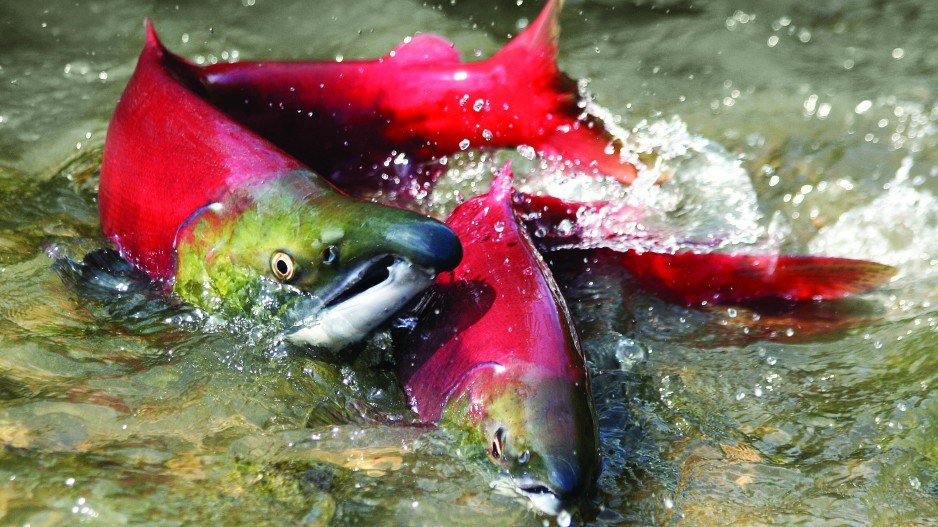Pink salmon cause a “trophic cascade” of the food web every two years, which could have negative consequences for other salmon species, a new study concludes.
In a study published in Fisheries Oceanography, Sonia Dawn Batten, Greg Ruggerone and Ivonne Ortiz looked at 15 years of data on pink salmon abundance, as well as the abundance of zooplankton (tiny aquatic animals) and the phytoplankton on which they feed.
The study concludes there is a “trophic cascade” pattern occurring every two years, when pink salmon are particularly abundant.
The abundance of zooplankton and phytoplankton has been recorded since 2000 using a special recording device called continuous plankton recorders towed behind commercial ships.
Scientists used that data to correlate it with pink salmon abundance, and found a strong correlation, with high pink salmon abundance in odd years coinciding with with a high abundance of phytoplankton, and a low abundance of the zooplankton.
Zooplankton feed on phytoplankton, and pink salmon feed on zooplankton. Sockeye also feed on zooplankton.
The correlation seen every two years is strong evidence that pink salmon are having a significant impact on the food web, possibly to the detriment of other salmon species that also feed on zooplankton.
“There’s a nice regression correlation between pink salmon abundance and zooplankton abundance over this 15-year time period,” said Greg Ruggerone, one of the three scientists involved in the study. “Those two are negatively correlated.”
The study focused on Eastern Kamchatka in Russia, which produces an abundance of pink salmon.
Nature provided its own control study in 2013, when pink salmon for that region unexpectedly crashed. Zooplankton abundance turned out to be exceptionally high that year.
“In other words, because pinks were not present, zooplankton rebounded in that odd-numbered year,” Ruggerone said.
Other studies have drawn similar correlations, but not over such a long timeframe.
Ruggerone has been studying the potential impacts of salmon hatcheries on wild salmon for years. And because pink salmon are one of the species produced by hatcheries, he thinks they could be having a negative impact on other salmon species in a competition for food.
Every year, commercial hatcheries in Alaska, Russia and Japan introduce 5 billion salmon into the Pacific Ocean – the bulk of which are pink and chum salmon.
Ruggerone believes that adding hatchery fish for a species that is already naturally abundant – pink salmon – is having a negative impact on other wild salmon species, particularly sockeye. He points out that Alaska alone introduces about 1 billion pink salmon each year with hatcheries.
His warnings are finally starting to get some attention. In Alaska, sport fishermen recently began pressuring Alaskan officials to stop allowing increased pink salmon hatchery production.




